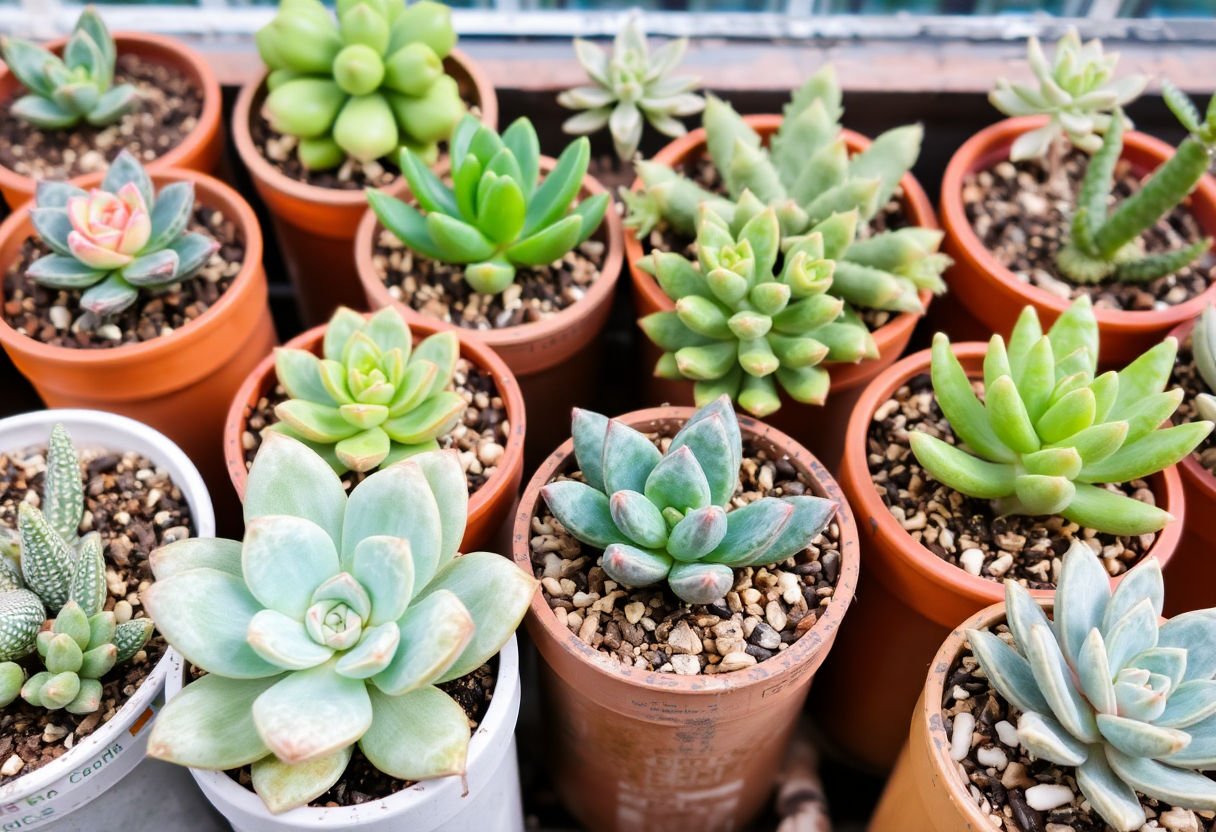Selecting the right zone for your succulent collection is crucial to ensure the vibrant growth and survival of these resilient plants. Various factors, such as gardening zones, microclimates, and the distinctions between indoor and outdoor environments, significantly influence their health. This article delves into the complexities of these zones, guiding you through the identification of specific requirements for different succulent varieties, and exploring the protective measures against extreme weather. As you learn to balance light, water, and soil conditions, you will be equipped to create an optimal environment for your succulents, ensuring they flourish in your care.
Key Takeaways
- Identifying the right zone for your succulents ensures they receive optimal light, temperature, and humidity conditions for healthy growth.
- Understanding the specific needs of different succulent varieties helps in choosing the suitable environment, enhancing their survival and thriving.
- Knowing your local gardening zone is essential, as it impacts how you care for your succulents through seasonal changes.
- Utilizing microclimates effectively can offer beneficial conditions that cater to the unique needs of diverse succulents in your collection.
- Proper soil and pot selection play a critical role in supporting the growth and health of succulents across various zones.
Understanding Succulent Varieties
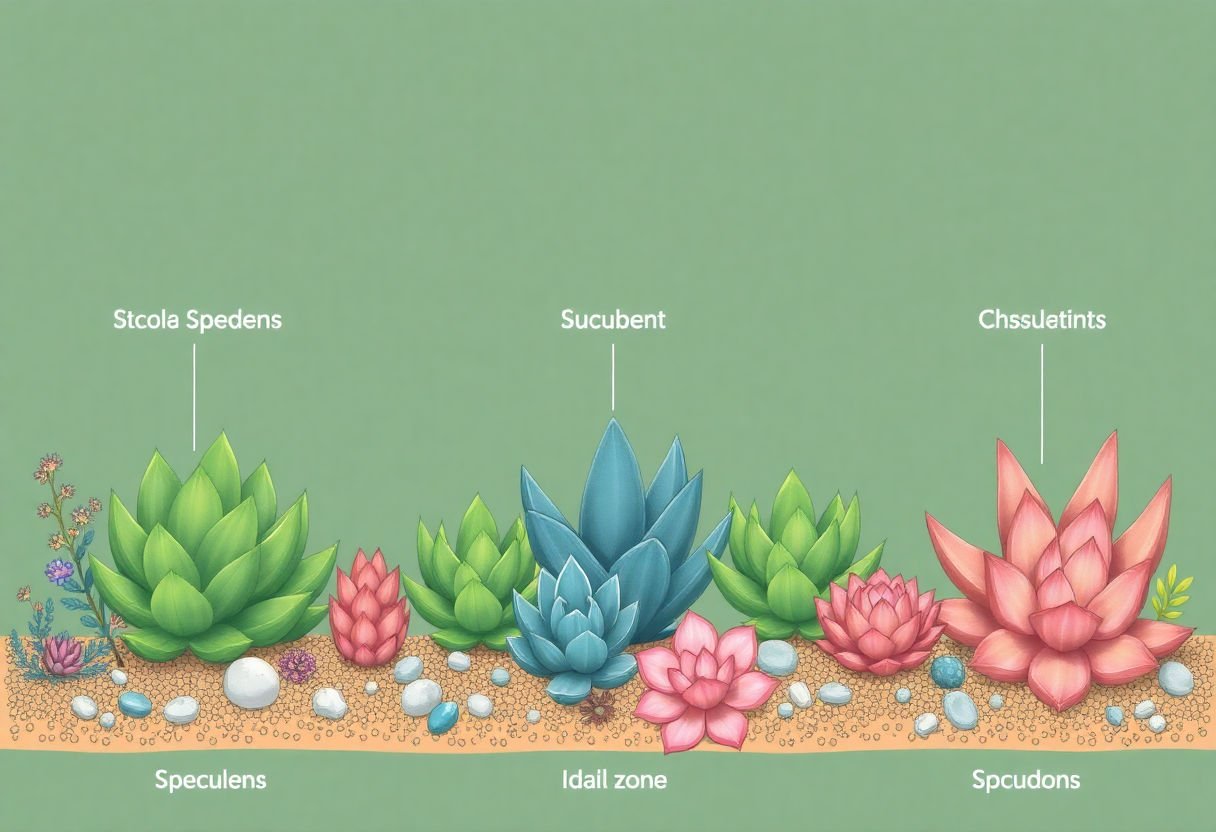
Succulents, known for their unique ability to retain water, come in diverse types, each with specific zone requirements. Understanding these varieties is essential for cultivating a thriving collection.
Echeveria is a popular variety, recognized for its rosette-shaped leaves. It thrives in zones 9 to 12, preferring a warm climate. These succulents require ample sunlight and well-draining soil to prevent root rot.
Sedum varieties, often dubbed stonecrops, are another favorite for gardeners. These hardy plants are suitable for zones 3 to 9. With their extensive adaptability, Sedums can withstand cooler climates, making them perfect for colder regions.
Haworthia, commonly recognized by its star-like leaf pattern, prefers zones 9 to 11. Unlike many succulents, Haworthias do well in partial sunlight, making them ideal for indoor environments where direct sunlight is limited.
The striking Aloe variety, known for its medicinal properties, flourishes in zones 9 to 11. Aloe vera, specifically, is versatile across these zones, requiring minimal watering and partial to full sun exposure.
Agave, with its bold, architectural appearance, is suitable for zones 8 to 10. It thrives in dry, sunny locations, making it a sturdy choice for arid climates.
By carefully selecting succulents based on their zone preferences, gardeners can ensure robust growth and vibrant health. Understanding these specific requirements not only enhances the beauty of the succulent collection but also reduces maintenance challenges, especially when transitioning between indoor and outdoor settings.
Identifying Your Gardening Zone
Determining your local gardening zone is essential for the successful cultivation of succulents, as it guides you in choosing varieties that will thrive in your climate. The United States Department of Agriculture (USDA) has devised a Hardiness Zone Map that divides the country into 13 zones. Each zone represents a specific range of average annual minimum winter temperatures. To identify your gardening zone, locate your area on the map using your ZIP code or consult local gardening resources available in community centers or online platforms.
Understanding your gardening zone not only helps in selecting suitable succulents but also assists in planning seasonal activities. Zones are divided by 10°F increments, with lower numbers indicating colder regions. For instance, if you live in USDA Zone 5, a region where temperatures can drop to -20°F, you’ll need to choose cold-hardy succulents or provide winter protection.
It’s important to note that your specific location may also be influenced by microclimates—localized climates within a larger area that can differ significantly due to factors like proximity to water bodies, elevation, and urbanization. While your USDA zone provides a general guideline, observing microclimates can offer additional insights into plant care.
By integrating this knowledge with observations of plant performance, gardeners can make informed decisions to support thriving succulent collections. Ultimately, identifying your gardening zone is a foundational step in creating a resilient and flourishing succulent environment.
Indoor vs. Outdoor Succulent Care
When nurturing succulents, understanding the nuances of indoor versus outdoor care is crucial for their thriving growth. Indoor succulents benefit from controlled environments where conditions such as temperature and humidity are relatively stable. For successful indoor succulent care, it’s essential to provide them with at least six hours of indirect sunlight daily. Placing them near a south-facing window often yields optimal results.
Conversely, outdoor succulents thrive in varying temperatures and conditions. They naturally adapt well to environments with intense sunlight and airflow. However, it’s important to consider that outdoor succulents need a gradual introduction to direct sunlight to prevent leaf scorching.
Key Differences in Soil and Watering:
-
Indoor succulents often prefer a well-draining potting mix with enhanced aeration. Due to limited light exposure, they require less water compared to their outdoor counterparts. Ensure the topsoil is dry before watering and use pots with drainage holes to prevent water retention.
-
Outdoor succulents typically thrive in gritty, porous soil. The frequency of watering is season-dependent. During summer, watering may be necessary more frequently, whereas in winter, once a month could suffice, accounting for precipitation levels.
Incorporating these insights ensures that, whether nestled inside or basking in the open air, your succulents are positioned to flourish, showcasing their natural beauty and resilience. Remember, the key to succulent success lies in replicating each plant’s native environment as closely as possible.
Microclimates and Their Role
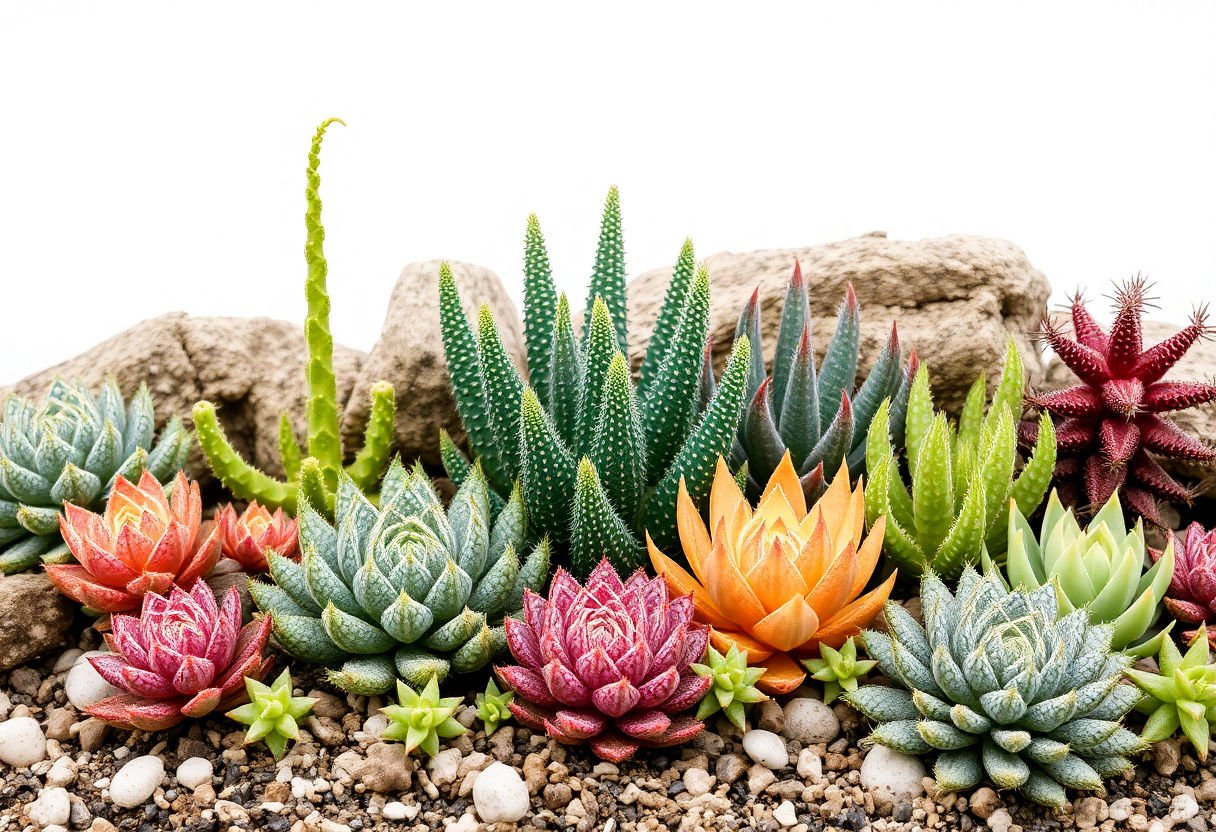
Understanding the concept of microclimates is paramount when cultivating succulents, as they can create unique growing environments within a larger climate zone. A microclimate refers to small-scale climate variations, often influenced by localized factors such as elevation, water bodies, or urban settings. These factors can significantly alter light, temperature, and humidity levels, directly impacting succulent health.
Succulents, being resilient plants that thrive in diverse conditions, can benefit greatly from leveraging microclimates to meet their specific needs. For instance, parts of a garden shaded by structures or trees may offer relief from scorching summer sun, creating a more suitable environment for shade-tolerant varieties such as Haworthias or Gasterias. Meanwhile, a sunny window ledge in an otherwise cool room might serve as an ideal microclimate for heat-loving succulents.
To better utilize microclimates, it’s crucial for succulent enthusiasts to:
- Observe the sun’s path and identify shaded zones.
- Note areas that retain moisture longer, as these can be ideal for succulents requiring more humidity.
- Utilize structures like walls or fences that can offer protection from harsh winds or frosts, which are detrimental to delicate succulents.
“Knowing how to capitalize on microclimates can distinguish a bountiful succulent collection from a struggling one,” says horticulturist Jane Weathers. By examining and adapting to these microclimates, you can ensure your succulents receive the most favorable conditions despite broader climatic challenges, ultimately leading to a thriving collection.
Choosing the Right Soil and Pot
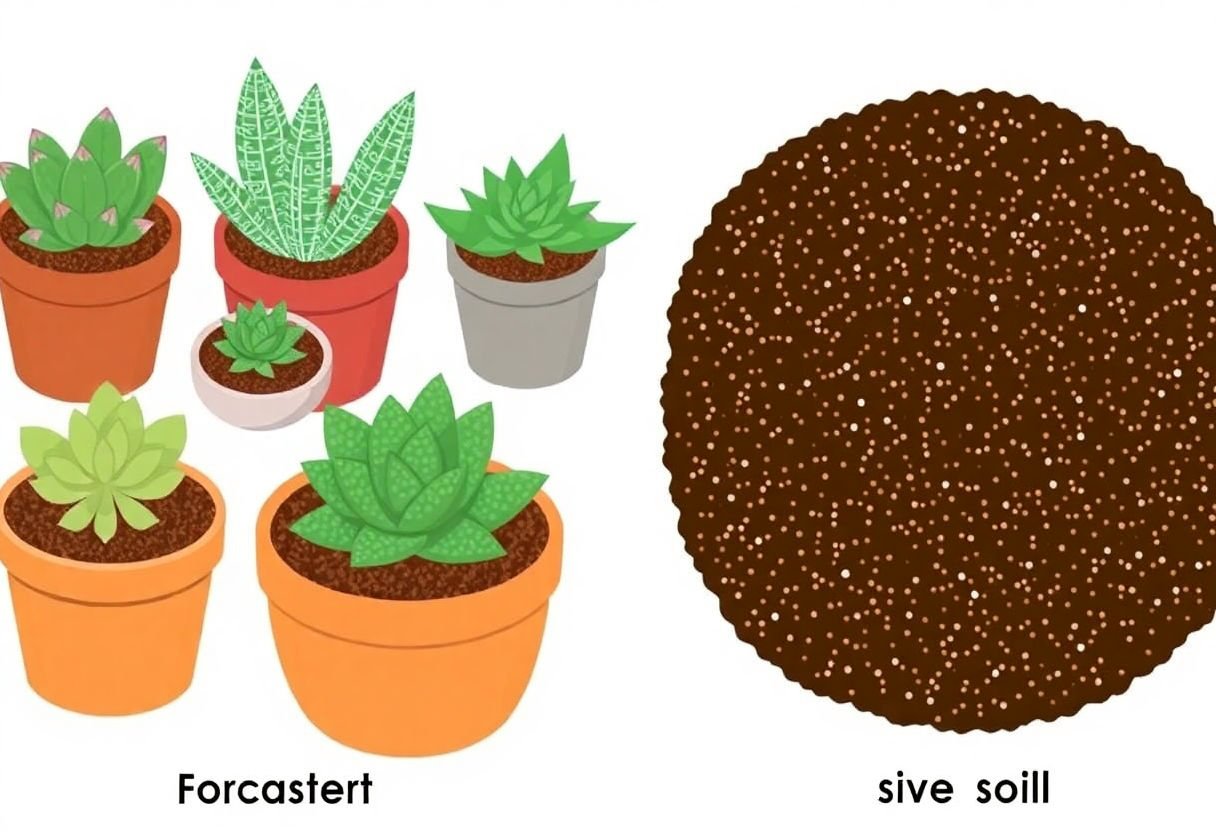
Selecting the appropriate soil and pot for your succulents is crucial for fostering a healthy, thriving collection, particularly as you navigate the various zones suitable for these plants. Succulents require a soil that provides excellent drainage to prevent root rot. A typical choice is a cactus mix, which is a blend of potting soil, perlite, and sand, ensuring moisture is efficiently wicked away from the roots.
When considering pots, the material can impact moisture retention and drainage. Terracotta pots are often recommended due to their porous nature, which allows the soil to dry out more effectively compared to plastic or glazed pots. However, it’s essential to adapt to your specific local zone and climate—if your area tends to be dry, you may opt for ceramic or plastic pots to retain more moisture.
Look for pots with drainage holes; this feature is non-negotiable for maintaining the delicate balance succulents need between hydration and aeration. Moreover, size matters; the pot should be slightly larger than the root system to provide space for growth while preventing excess soil that retains unnecessary moisture.
Certain succulents with sprawling root systems, like the string of pearls, thrive better in shallow containers, while those with deeper roots, such as jade plants, need deeper pots to support stable growth.
Incorporating a layer of gravel or small stones at the bottom of the pot can further enhance drainage. By understanding the delicate interplay between soil type, pot material, and the unique environmental characteristics of your gardening zone, you can create an optimal growing space for your succulent collection.
Light and Watering Requirements
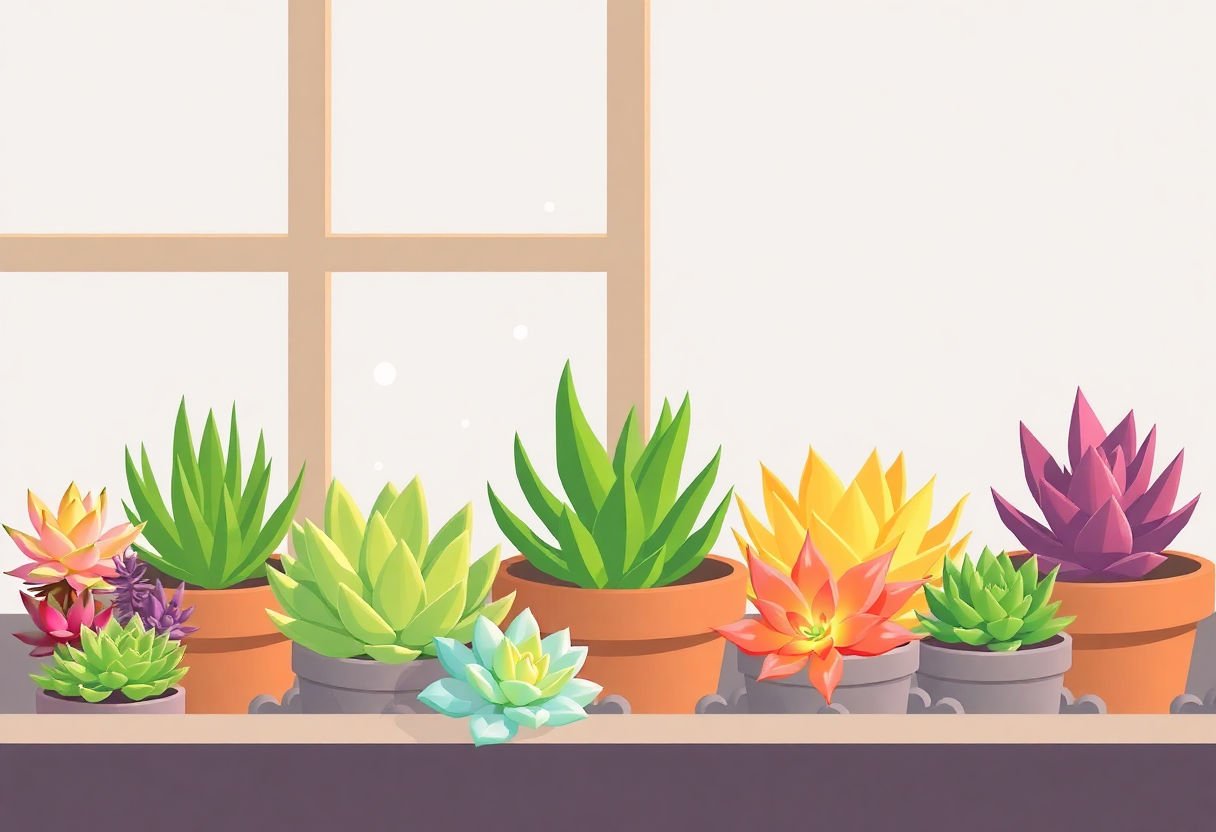
Succulents thrive when their environmental needs, particularly light and water, are meticulously catered to, ensuring they flourish in their designated zones.
Light Exposure:
Succulents generally require abundant sunlight, but the intensity and duration of exposure can vary significantly based on the specific species and their zonal adaptation. In zones with intense sunlight, such as the arid regions of the Southwestern United States, succulents benefit from filtered or indirect light to prevent sunburn. Conversely, in Northern zones with less intense sunlight, placing succulents in south-facing windows or areas with prolonged light exposure is crucial. Balancing light conditions prevents etiolation, the condition where succulents become elongated and pale due to insufficient light.
Watering Frequency:
Watering succulents demands an understanding of their drought-resistant nature, which is inherently tied to their native zones. In warmer, drier climates, succulents may require watering every two weeks. However, in more humid regions, watering frequency should be reduced to prevent root rot, ensuring soil is completely dry between waterings. Employing the “soak and dry” method—where the soil is thoroughly drenched and left to dry—is often effective.
Adaptations for Varied Zones:
To adapt light and watering practices to the specific requirements of each zone, it is beneficial to:
- Observe the succulent’s physical changes—such as leaf color and firmness—to adjust care practices promptly.
- Utilize grow lights in indoor settings, particularly in low-light regions, to supplement natural exposure.
- Employ well-draining pots and soil mixtures to optimize water management, crucial in both arid and humid zones.
These considerations ensure a thriving environment tailored to the diverse world of succulents.
Protecting Succulents from Extreme Weather
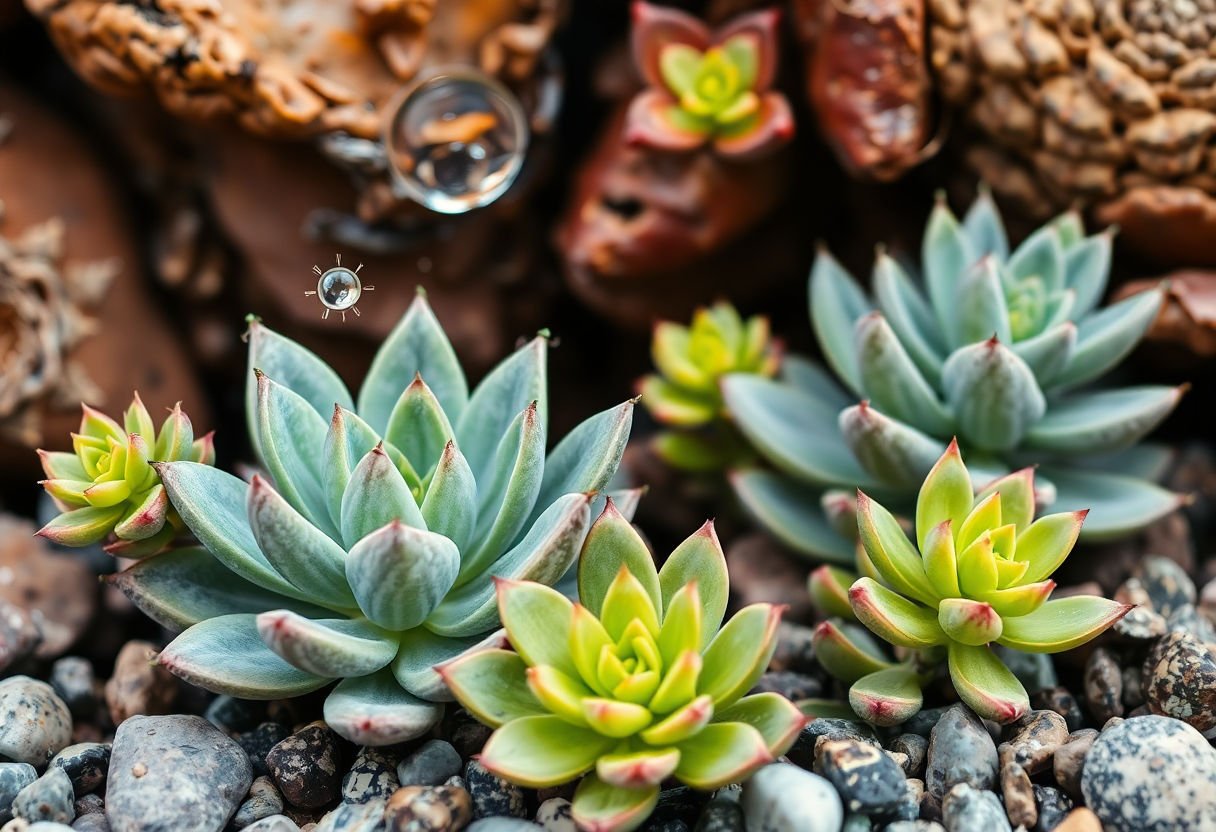
When caring for succulents, shielding them from extreme weather conditions is crucial to preserving their health and vitality. Whether facing the blistering heat or an unexpected cold snap, specific strategies can ensure your succulents remain thriving throughout the adverse weather.
Heat Protection:
Succulents are well-known for their resilience in arid climates; however, prolonged exposure to extreme heat can be detrimental. To mitigate the effects, consider:
- Providing shade using light-filtering materials like shade cloths or placing them under a larger plant.
- Increasing watering frequency slightly during peak heat waves, but always ensuring proper drainage to prevent root rot.
- Mulching with materials like pebbles to help retain soil moisture without over-saturating.
Cold Resistance:
While some succulents can endure lower temperatures, frost is a significant concern. To safeguard against the cold:
- Move portable pots indoors or to sheltered areas during frost warnings.
- Apply frost cloths to cover outdoor succulents, offering an additional layer of insulation.
- Elevate pots to prevent cold air from directly contacting their roots.
In regions with programmable temperature fluctuations, employing a greenhouse or cold frame can protect your succulents year-round. These structures offer controlled environments, buffering against sudden climate shifts.
Monitoring local weather forecasts and adjusting care routines accordingly ensures succulents are better prepared to face extreme conditions. By implementing these practical strategies, gardeners can fortify their succulent collections against nature’s unpredictabilities, ensuring continued growth and sustainability.
Pest Control and Disease Prevention
Common Pests and Diseases Affecting Succulents
Succulents, while resilient, are not immune to pests and diseases. Identifying potential threats promptly is crucial to maintaining a healthy collection. Among the most common pests are mealybugs, which appear as white, cotton-like masses on leaves and stems. They weaken plants by draining sap, potentially leading to disease. Additionally, aphids can infest new growth, and spider mites may leave webs and cause leaf discoloration.
Prevention Strategies for Your Zone
Preventing these pests often requires tailored strategies based on your specific gardening zone. For instance, maintaining optimal humidity levels can deter the spread of spider mites. Regularly inspect your succulents for signs of infestation, particularly if they are grown indoors where pests can go unnoticed.
Here are some preventive measures:
- Keep foliage dry: Excessive moisture can encourage fungal diseases in humid areas.
- Prune infested parts: Remove heavily infested areas promptly to contain spread.
- Use insecticidal soap: For outdoor succulents, apply these natural products to control minor infestations.
Disease Prevention
Diseases like root rot, often caused by overwatering, can devastate succulents. Ensure pots have excellent drainage and soil retains the right amount of moisture. In regions susceptible to fungal diseases, providing sufficient air circulation is essential to prevent mold growth.
Regularly applying these preventative measures ensures a robust and thriving succulent collection. Be vigilant, as the failure to manage pests and diseases effectively can compromise the health and beauty of your succulent garden.
Conclusion
Choosing the right zone for your succulent collection is crucial for ensuring their vitality and growth. By understanding the unique needs of different succulent varieties and being aware of your local gardening zone, you can tailor their care to maximize success. Integrating knowledge of microclimates, soil composition, and protection from extreme conditions will further enhance their resilience. As you embark on cultivating these remarkable plants, remember that careful observation and adaptation to their changing needs can lead to a thriving and vibrant collection. Embrace these strategies as they promise a flourishing future for your succulents.
Frequently Asked Questions
What is a gardening zone, and why is it important for succulents?
A gardening zone, often referred to as a hardiness zone, is a geographically defined area where specific plant categories can grow. It’s crucial for succulents because different species thrive in different zones, impacting their overall health and longevity.
How can I determine which zone is best for my succulent collection?
To determine the best zone for your succulents, research their species-specific requirements and cross-reference with your local hardiness zone, which can be found through resources such as the USDA Plant Hardiness Zone Map.
Can succulents survive outside of their optimal zone?
While succulents may survive outside of their optimal zone, it requires additional care and environmental adjustments like providing shade, improving drainage, or adjusting watering schedules to accommodate less-ideal conditions.
Is it possible to grow succulents indoors if my outdoor zone isn’t suitable?
Yes, many succulents can be grown indoors, allowing for control over light, temperature, and moisture levels. Indoor growth offers flexibility, especially if your outdoor zone isn’t conducive to their requirements.
How do microclimates influence succulent growth in my area?
Microclimates can offer pockets of more favorable growing conditions within a larger zone, providing advantages such as protection from wind or increased sunlight. Understanding and utilizing these unique conditions can enhance the success of your succulent collection.
